Where is Maduru Oya National Park
Maduru Oya National Park is a Sri Lankan national park that was established as part of the Mahaweli development project and serves as a catchment area for the Maduru Oya Reservoir. The park was established on November 9, 1983.
The park’s significance is in providing a sanctuary for wildlife, particularly elephants, and in protecting the immediate catchments of five reservoirs.
Within the park’s boundaries, Henanigala is home to a community of Vedda people, Sri Lanka’s indigenous ethnic group. The park is located 288 kilometers (179 miles) north of Colombo.
Physical Features of Maduru Oya National Park
Precambrian rock degradation has resulted in the formation of a mature mantled and undulating peneplain, disrupted by numerous prominent remnants of erosion (rock outcrops) and ridges.
The park’s southwest rocky mountains are an impressive topographic feature, stretching for 8 kilometers (5.0 miles).
Alluvium deposits and Miocene limestone are part of the geological regime. The predominant soil type is red earth, which is relatively fertile but easily eroded.
The park’s water systems, which account for 15% of its land area, include five reservoirs: Maduru Oya, Ulhitiya, Ratkinda, NDK, and Henanigala, as well as tributaries of the Mahaweli and Maduru Oya rivers.
The northeast monsoon, which lasts from October to February, dominates the climatic conditions in Sri Lanka’s dry zone.
The average annual rainfall is 1,650 millimeters (65 in), the average annual temperature is around 27 degrees Celsius (81 degrees Fahrenheit), and overall evapotranspiration rates usually exceed precipitation levels.
The average annual rainfall is 1,650 millimeters (65 in), the average annual temperature is around 27 degrees Celsius (81 degrees Fahrenheit) and evapotranspiration rates exceed precipitation levels. The predominant soil type is red earth, which is relatively fertile but easily eroded.
History and Cultural Heritage
Maduru Oya National Park is one of four designated national parks as part of the Mahaweli Development Project. Wasgamuwa, Flood Plains, and Somawathiya are the other three.
In the 1980s, an ancient sluice on the Maduru Oya’s old ruptured earthen bund was discovered. The sluice is approximately 30 feet (9.1 m) high, 30 feet (9.1 m) wide, and 219 feet (67 m) long, made of stone slabs and bricks.
The upper sluice was constructed in two phases, the first of which was completed before the sixth century BC. The lower sluice, on the other hand, is thought to be older.
Buddhist ruins of shrines, temples, dagobas, statues and hermitages from various periods of Sri Lankan history can be found in Henanigala, Kudawila, Gurukumbura, Ulketangoda, and Werapokuna.
Kandegamakanda has yielded early Brahmi inscriptions dating from the first to third centuries AD. Prior to the declaration of the park, the Vedda people, Sri Lanka’s indigenous people, numbered less than a thousand people and lived in Kandeganwela, Kotatalawa, Dambana, and other locations.
Outside the park is the temple of Mahiyangana, which is very important to the Vedas. The Veddas [Tribe], said to be descended from King Vijaya and Queen Kuveni, lived in Sri Lanka long before the Sinhalese people arrived from India in 543 BC.
They have traditionally been hunters and gatherers, but have increasingly relied on small-scale agriculture for a living. Although the Dambana community has preserved their traditional way of life to some extent.
Maduru Oya National Park is one of four designated national parks as part of the Mahaweli Development Project. Buddhist ruins of shrines, temples and dagobas can be found in Henanigala, Kudawila, Gurukumbura, Ulketangoda, and Werapokuna.
Flora Diversity of Maduru Oya National Park
Although the park’s southern boundary is near the intermediate zone, it is entirely in the dry zone.
Drypetes sepiaria, Chloroxylon swietenia, Manilkara hexandra, Pterospermum canescens, wood apple Feronia limonia, Cassia fistula, and Dimorphocalyx glabellus characterize the area’s climax community.
However, the majority of the park’s forests had been heavily exploited for shifting cultivation. This has had an impact on secondary forests as well as vast stretches of open plains dominated by grasses.
Shrubs succeed in the herbaceous stage, and Trema Orientalis distinguishes the thicket stage. Pterospermum canescens, Drypetes sepiaria, and Manilkara hexandra are among the first trees to appear.
Maduru Oya Dam is surrounded by parkland that is maintained by periodic fires. Around the reservoir, there are a variety of woody plants. The only Dipterocarpaceae species to occur in the dry zone, Vatica Obscura, is found in a few locations on the banks of the Maduru Oya and Gallodai Aru rivers. The exotic teak Tectona grandis is included in the park’s northeastern region.
Maduru Oya Dam is surrounded by parkland that is maintained by periodic fires. Shrubs succeed the herbaceous stage, and Trema orientalis distinguishes the thicket stage. Pterospermum canescens, Drypetes sepiaria and Manilkara hexandra are among the first trees to appear.
Fauna Diversity of Maduru Oya National Park
The park’s fauna is significant because of its diversity, which includes a number of endemic species. Threatened mammal species include elephant Elephas maximus (150-200 before the park’s establishment), sloth bear Melursus ursinus, leopard Panthera pardus, and water buffalo Bubalus bubalis.
According to a 2007 study, the current elephant population is between 150 and 200. Other mammals include the toque monkey Macaca sinica, the common langur Presbytis entellus, the jackal Canis aureus, the fishing cat Felis viverrina, the wild boar Sus scrofa, the Indian muntjac Muntiacus muntjak, the spotted deer Cervus axis, and the sambar Cervus unicolor.
Porcupine Hystrix indica, black-naped hare Lepus nigricollis, Indian pangolin Manis crassicaudata, squirrels, rats, and mice are examples of small mammals.
The park has also been home to a European otter, Lutra lutra. The grey slender loris Loris lydekkerianus has been observed in Maduru Oya National Park.
The painted stork Mycteria leucocephala, white-bellied sea eagle Haliaeetus leucogaster, grey pelican Pelecanus philippensis, great cormorant Phalacrocorax carbo, and little cormorant P. niger are among the park’s diverse aquatic avifauna.
Endangered Sri Lanka junglefowl Gallus lafayetii, rare broad-billed roller Eurystomus glaucurus (possibly the only dry zone haunt), common tailorbird Orthotomus sutorius, shama Copsychus malabaricus, black-hooded oriole Oriolus xanthornus, and brown-capped pygmy woodpecker Yungipicus nanus are among the forest species.
There is also endemic red-faced malkoha (Phaenicophaeus pyrrhocephalus). Among the bird species found in the reservoirs are the Oriental darter Anhinga melanogaster, the spot-billed pelican Pelecanus philippensis, the Asian openbill Anastomus oscitans, the black-headed ibis Threskiornis melanocephalus, and the Eurasian spoonbill Platalea leucorodia.
Indian star tortoise (Geochelone elegans), common monitor (Varanus bengalensis), water monitor (Varanus Salvator), black-tailed python (Python molurus), krait (Bungarus spp.), common cobra (Naja naja), mugger crocodile (Crocodylus palustris), estuarine crocodile (Crocodylus porosus).
Other reptiles with aquatic habits include the Indian black turtle (Melanochelys trijuga) and the Indian flap-shelled turtle (Lissemys punctata). Barbs (Barbus spp.), giant gourami (Osphronemus goramy), snakeheads (Channa spp. ), catfish (Siluriformes), and exotic tilapia (Tilapia mossambica) are the most common fish in the reservoirs.
Maduru Oya National Park in Sri Lanka is home to a number of endemic and threatened mammal species. The park has also been home to European otter, Lutra lutra, and the grey slender loris Loris lydekkerianus.
Conservation Efforts
Poaching, illegal timber felling, and encroachment on wetland areas are all serious issues within the national park. Lantana Camara, an alien species, has infiltrated the park.
The Nilgala jungle corridor has been proposed to connect Maduru Oya and Gal Oya National Parks, providing more contiguous wildlife habitat.
Unplanned colonization of land in the park by people hoping to obtain land deeds under the Mahaweli development project is on the rise. This has caused significant disruption to the park’s wildlife. Since then, approximately 1500 squatters have been resettled in established Mahaweli settlements.
People from several villages have been resettled in Henanigala as part of the Mahaweli Project Vedda. The removal of Veddas has received a lot of attention.
Conflicting interests between wildlife and settlers in park areas bordering the development area are among the effects of the Accelerated Mahaweli Development Programme: elephants and wild boars raid and damage crops, while cattle and other domesticated animals trespass into the park.
The construction of dams, tunnels, and roads has resulted in badly dispersed landscapes in a few villages. Salvinia molesta, a dangerous floating weed, has taken over the Maduru Oya reservoir.
Poaching, illegal timber felling, and encroachment on wetland areas are all serious issues within the national park. Lantana camara, an alien species, has infiltrated the park. The Nilgala jungle corridor has been proposed to connect Maduru Oya and Gal Oya National Parks.
Conclusion
In conclusion, Maduru Oya National Park in Sri Lanka is a true gem for those looking for an adventure in the wilderness. With its rugged terrain and diverse wildlife, the park offers visitors a chance to explore a truly unique and unspoiled corner of the island.
At Ceylon Wild Tours, we are committed to helping visitors experience the very best of Sri Lanka’s natural beauty and wildlife, and Maduru Oya National Park is certainly no exception. Our expert guides are passionate about sharing their knowledge and expertise, and ensuring that every visitor has an unforgettable experience.
From exhilarating jeep safaris and birdwatching expeditions to camping under the stars and trekking through the park’s rugged wilderness, there is something for everyone at Maduru Oya National Park.
So why not plan your visit to Maduru Oya National Park today and discover the wonders of this breathtaking destination? With Ceylon Wild Tours, you can rest assured that you’ll have the trip of a lifetime, filled with unforgettable memories and experiences that will last a lifetime.

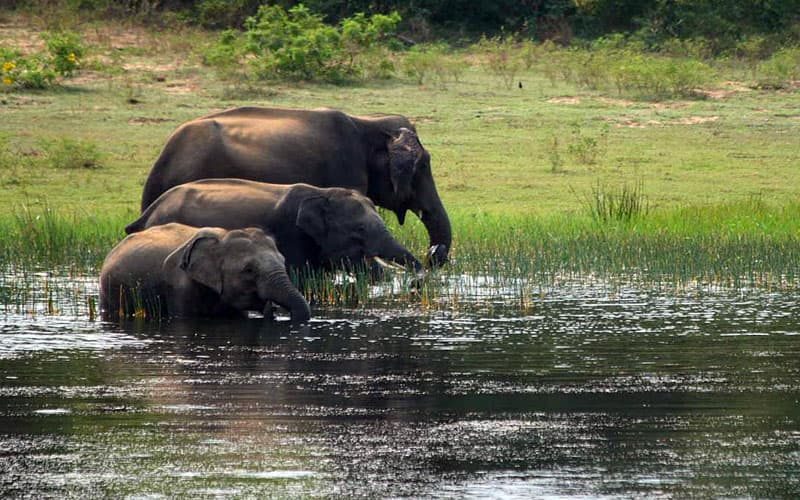




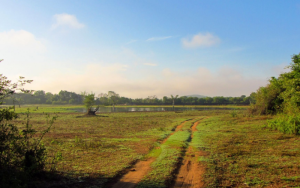
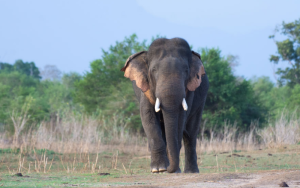
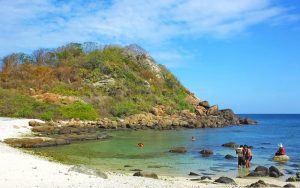
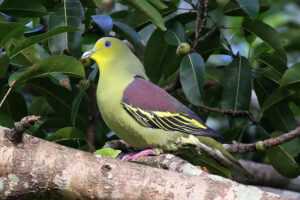


One thought on “Maduru Oya National Park | Sri Lanka”
5